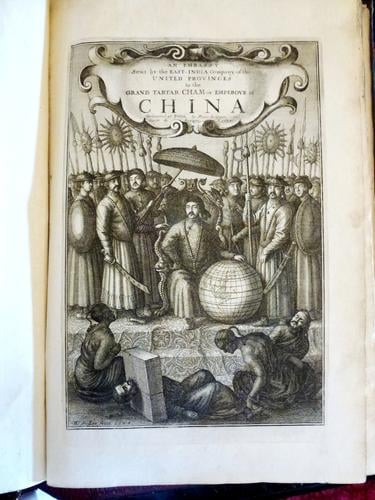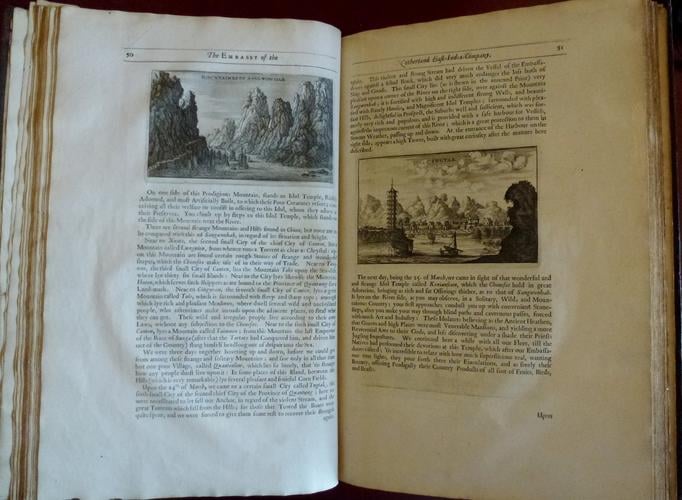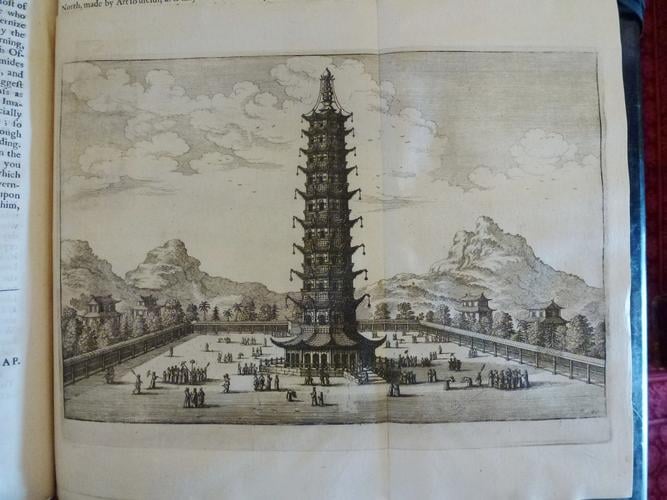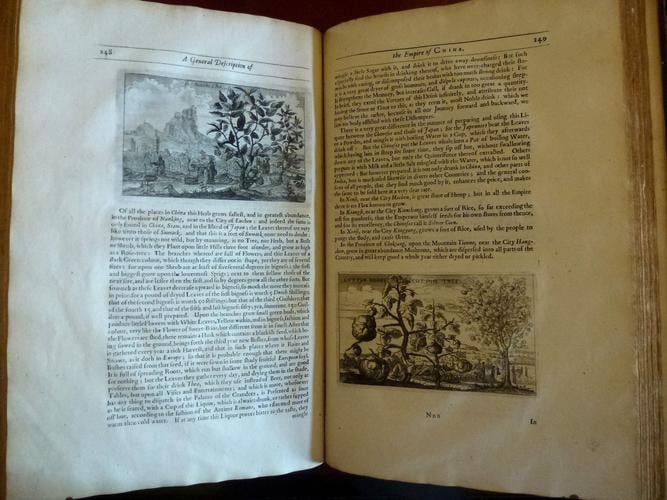-
1 of 253523 objects
An Embassy of from East-India Company of the United Provinces to the ... Emperour of China 1669
42.5 x 4.5 x 28.2 cm (book measurement (inventory)) | RCIN 1050938

Johan Nieuhof (1618-72)
An Embassy from the East-India Company of the United Provinces to the Grand Tartar Cham Emperour of China delivered by their excellcies Peter de Goyer and Jacob de Keyzer / . . . described by John Nie 1669

Johan Nieuhof (1618-72)
An Embassy from the East-India Company of the United Provinces to the Grand Tartar Cham Emperour of China delivered by their excellcies Peter de Goyer and Jacob de Keyzer / . . . described by John Nie 1669

Johan Nieuhof (1618-72)
An Embassy from the East-India Company of the United Provinces to the Grand Tartar Cham Emperour of China delivered by their excellcies Peter de Goyer and Jacob de Keyzer / . . . described by John Nie 1669

Johan Nieuhof (1618-72)
An Embassy from the East-India Company of the United Provinces to the Grand Tartar Cham Emperour of China delivered by their excellcies Peter de Goyer and Jacob de Keyzer / . . . described by John Nie 1669




-
An Embassy from the East-India Company of the United Provinces, translated into English by the bookseller John Ogilby in 1669, is one of the earliest European attempts at an accurate description of China and its population. Due to its isolation under the Ming dynasty, earlier descriptions of China relied on fanciful tales and legends, many originating from ancient and medieval texts and hearsay.
The book consists of both an account of an embassy of the Dutch East India Company to the Shunzhi Emperor (1638-1661) and an account of general Chinese customs and occupations. The information was gathered and collated by Johan Nieuhof, one of the party which visited the Emperor in Beijing. His first-hand account therefore, allowed accurate descriptions and depictions of Chinese architecture, clothing and landscapes. The book was immensely popular in Europe, and was translated into many languages besides English and was influential in the introduction and proliferation of the 'chinoiserie' style in European art throughout the eighteenth century. This style manifested itself in a wide range of artistic fields, from Sèvres porcelain in France, to the ornamental pagodas found in Britain and Germany.
Notably, the book contains possibly one of the earliest descriptions of the cultivation of tea, specifically stating its expense and its value to East Asian society. This description may have led to the English East India Company seeking to profit from the crop, initially through trade with Dutch merchants in Batavia (now Jakarta), and later through its introduction to the company's Indian territories.Provenance
Purchased by the Royal Library in December 1936.
-
Creator(s)
(translator)(publisher)Acquirer(s)
-
Measurements
42.5 x 4.5 x 28.2 cm (book measurement (inventory))
Alternative title(s)
An Embassy from the East-India Company of the United Provinces to the Grand Tartar Cham Emperour of China delivered by their excellcies Peter de Goyer and Jacob de Keyzer / ... described by John Nieuhoff ; englished and set forth ... by John Ogilby.